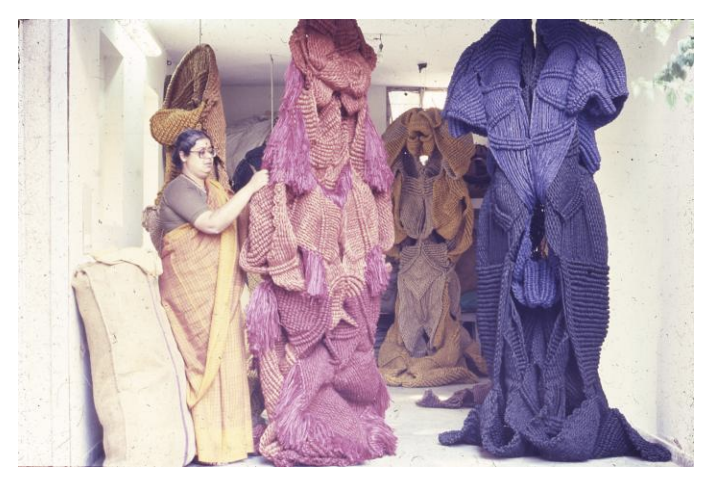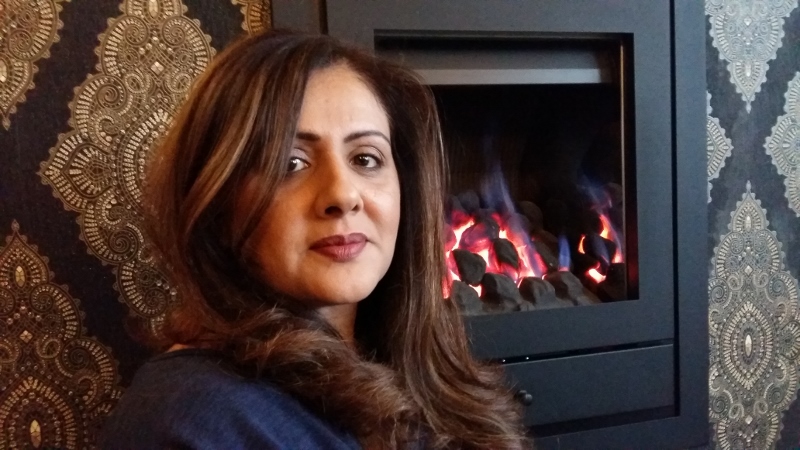
The Royal Academy of Arts presents A Story of South Asian Art: Mrinalini Mukherjee and Her Circle, a group exhibition telling the story of Indian artist Mrinalini Mukherjee (1949–2015) through a constellation of people and places that informed her practice. For the first time, a body of Mukherjee’s work is shown alongside that of some of her key mentors, friends and family. Featuring approximately 100 works that trace a century, including sculpture, painting, drawing, textiles, ceramics and printmaking, the exhibition explores how these close relationships, shared learning, and support for one another shaped not just individual careers, but formed a vibrant creative and intellectual network that influenced the trajectory of modern and contemporary art in South Asia.
Drawing on the Royal Academy’s legacy as one of the oldest art schools in Europe, the exhibition highlights how two visionary educational institutions—the Kala Bhavana (Institute of Fine Arts) in Santiniketan, founded in 1919 by the Nobel laureate Rabindranath Tagore, and the Faculty of Fine Arts at Maharaja Sayajirao University in Baroda (renamed Vadodara in 1974)—inspired generations of pioneering artists whose contributions to the breadth of Indian modernism have been significant.
Organised thematically and chronologically, each gallery in the exhibition centers on a location pivotal to both Mukherjee’s artistic development—Santiniketan, Baroda, and New Delhi’s Garhi Studios—and that of the South Asian cultural avant-garde more broadly.
Born in post-partition Bombay (renamed Mumbai in 1995) and raised in Santiniketan, Mrinalini Mukherjee worked intensively with fibre, and later bronze and ceramic, for most of her four-decade career, creating an extensive body of work that fused abstraction and figuration with influences from nature, ancient Indian sculpture, modern design, and local craft and textile traditions. As a student
in Baroda, she began to experiment intuitively with the ancient Arabic hand-knotting weaving technique of macramé, creating monumentally-scaled freestanding soft sculptures with an embodied presence. When Mukherjee later turned to ceramic and then bronze, she followed a similarly intuitive process leading to works of an organic nature that also drew from modernist movements in India and beyond.
Mukherjee’s work is presented in dialogue with that of her mother, Leela Mukherjee (1916–2002). Considered to be one of India’s first modernist female sculptors, her sculptures, watercolours and etchings draw on influences as wide as Nepalese wood carving, indigenous Mexican art and Indian folklore, and are shown for the first time institutionally outside of India. Her father, Benode Behari Mukherjee (1904–1980), a pioneer of the Contextual Modernism movement in India, which encouraged artistic practice to embrace humanism and non-hierarchical cross-culturalism with local traditions, is represented by a range of works including a group of collages made after he lost his eyesight in his early 50s.
KG Subramanyan (1924–2016), a highly influential educator and prolific artist who taught Mukherjee and a number of eminent contemporary Indian artists, is represented by a range of paintings, terracotta reliefs, works on paper and rare textile fragments. Jagdish Swaminathan (1928–1994), a close friend and mentor Mukherjee encountered in New Delhi, influenced her through his exploration of indigenous iconography and socio-political critique in painting and print. Paintings and prints by Mukerjee’s contemporary Nilima Sheikh (b. 1945) are on display, including the reunion of her influential painted scroll series SongSpace, 1995 (Museum of Art & Photography, Bengaluru; Czaee and Suketu Shah; ACG Worldwide; Private collection) for the first time since the work was conceived 30 years ago. Prints, ceramics and paintings by Gulammohammed Sheikh (b. 1937), also a close friend of Mukherjee and a student of Subramanyan, are on view, blending an engagement with political and cultural tensions in India with interests in classical art and storytelling.
The exhibition concludes with recent works by both Nilima and Gulammohammed Sheikh from 2024, showcasing the continued vitality of these relationships and their lasting influence.
The exhibition is a collaboration with The Hepworth Wakefield who will present an expanded version in 2026. Curatorial research for the exhibition has been made possible with Art Fund support.
Get your tickets here: https://www.royalacademy.org.uk/exhibition/mrinalini-mukherjee
WRITTEN BY: Nura Arooj







